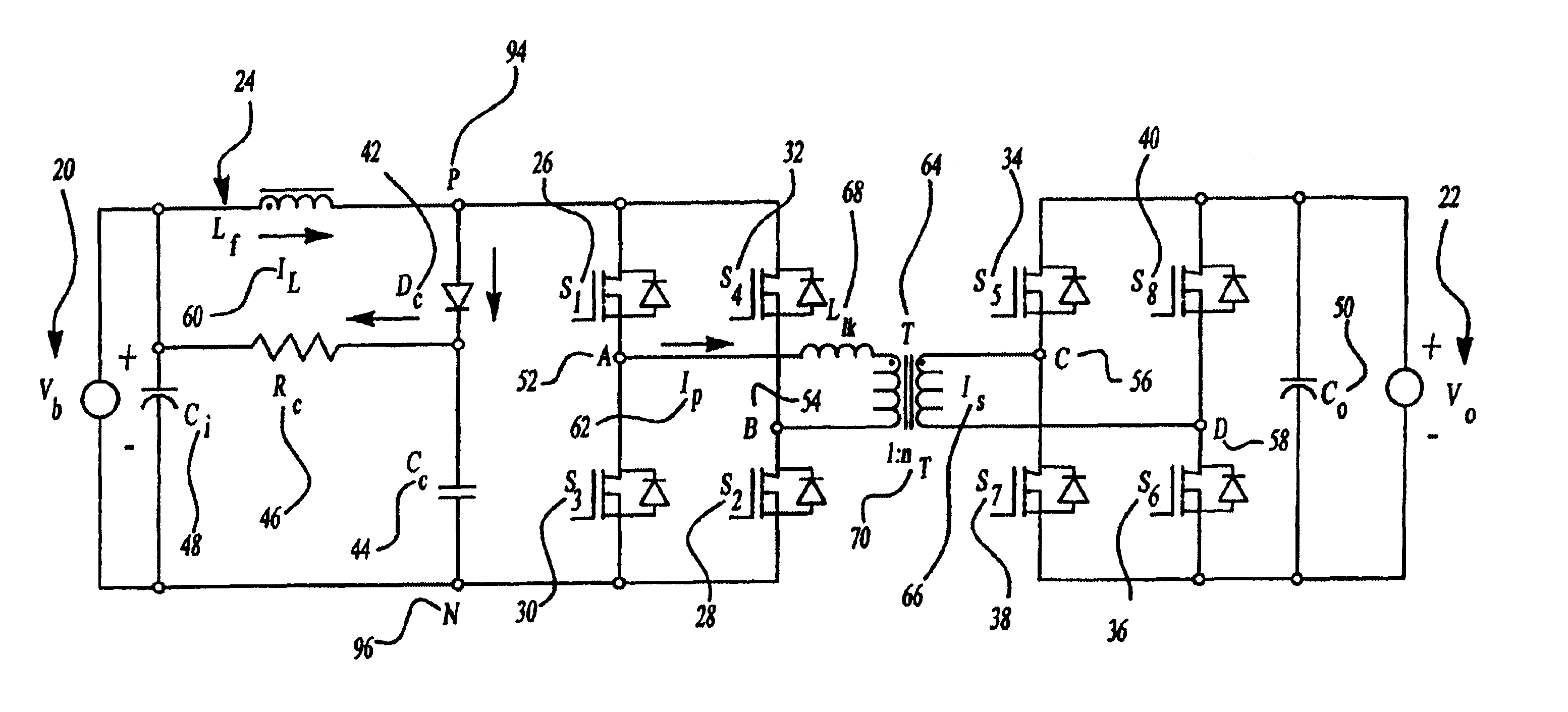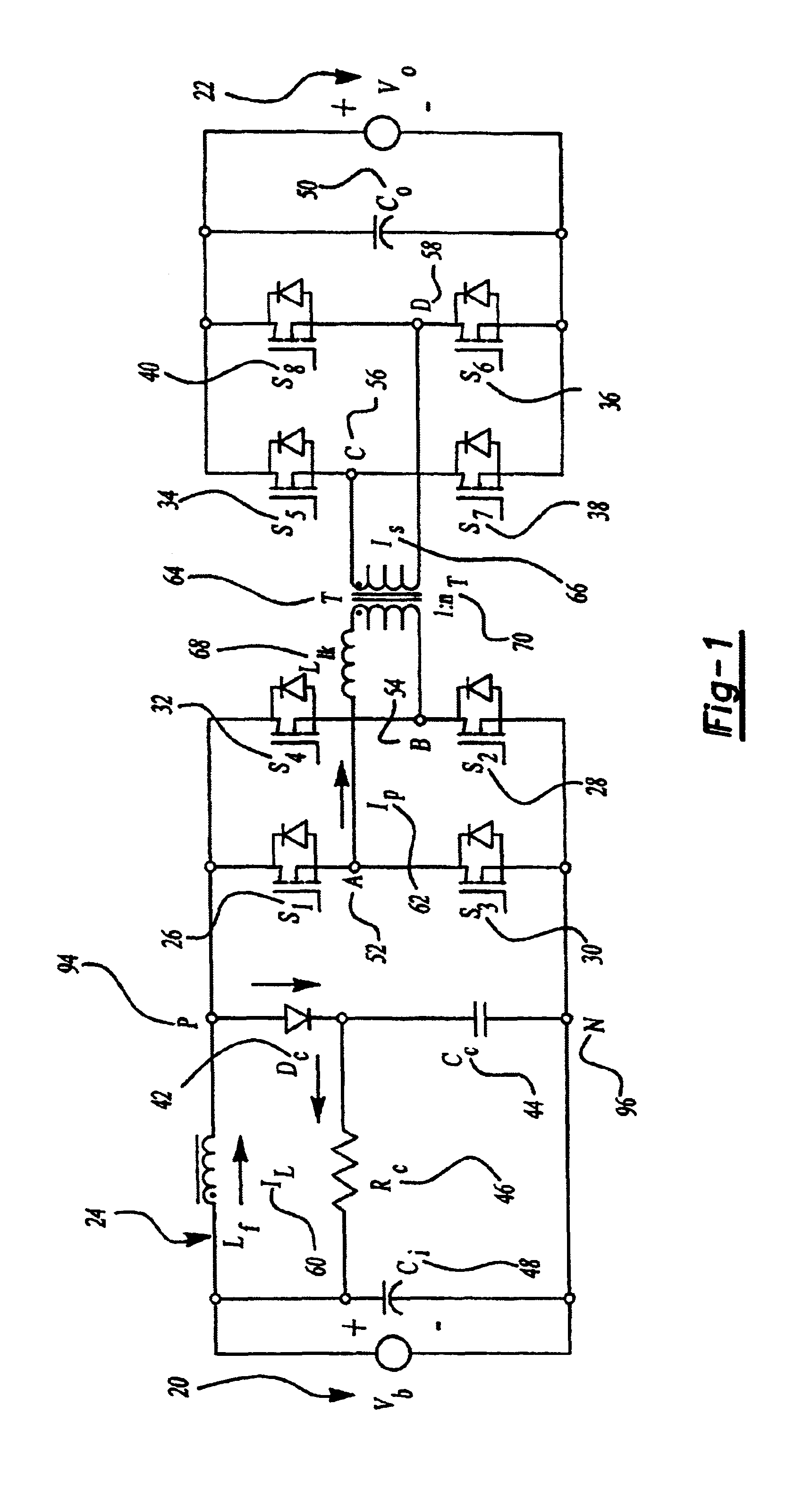Accelerated commutation for passive clamp isolated boost converters
a passive clamp and boost converter technology, applied in the direction of electric variable regulation, process and machine control, instruments, etc., can solve the problems of severe limitation in a low voltage, inability to meet current conditions, and high implementation cost of technology, so as to achieve efficient and cost-effective
- Summary
- Abstract
- Description
- Claims
- Application Information
AI Technical Summary
Benefits of technology
Problems solved by technology
Method used
Image
Examples
Embodiment Construction
The present invention relates generally to a DC / DC converter and specifically to a system and method to accelerate commutation for a passive clamp isolated boost for a high power bidirectional DC / DC converter. For the present application, high power could be defined as greater than 1 kW power.
Generally, the operation of inductive storing converters is based on energy transfer cycles. This includes a period of accumulation of magnetic energy in an inductive device (such as an inductor or transformer) through a circuit, followed by a period of restitution of this energy in a load (such as a typical 12V load in a car) through another circuit.
The present invention relates in particular to a DC / DC converter. This converter can be bidirectional and transform energy from primary to secondary circuits and from the secondary to primary circuits through a transformer. The primary circuit comprises at least one pair of switches such as switched diodes and the secondary circuit has two pairs of...
PUM
 Login to View More
Login to View More Abstract
Description
Claims
Application Information
 Login to View More
Login to View More - R&D
- Intellectual Property
- Life Sciences
- Materials
- Tech Scout
- Unparalleled Data Quality
- Higher Quality Content
- 60% Fewer Hallucinations
Browse by: Latest US Patents, China's latest patents, Technical Efficacy Thesaurus, Application Domain, Technology Topic, Popular Technical Reports.
© 2025 PatSnap. All rights reserved.Legal|Privacy policy|Modern Slavery Act Transparency Statement|Sitemap|About US| Contact US: help@patsnap.com



